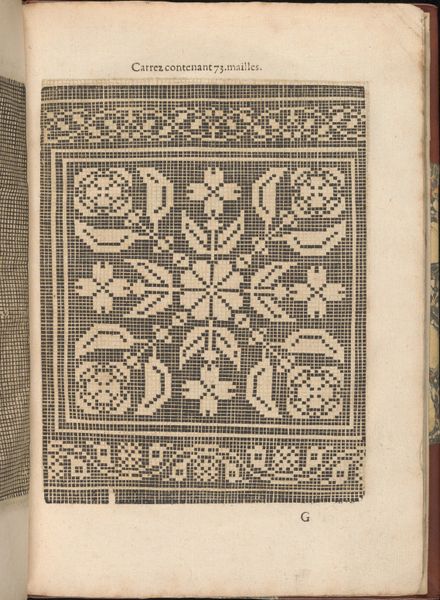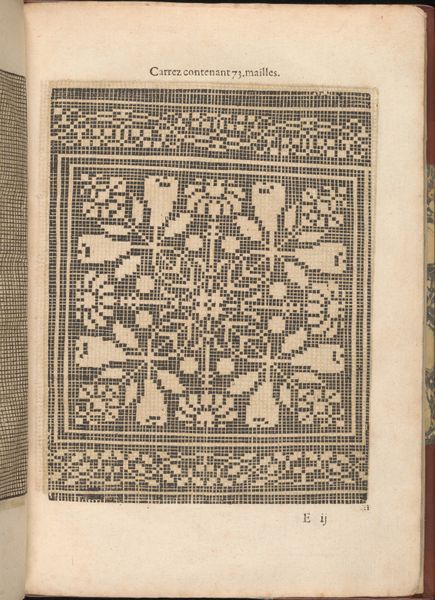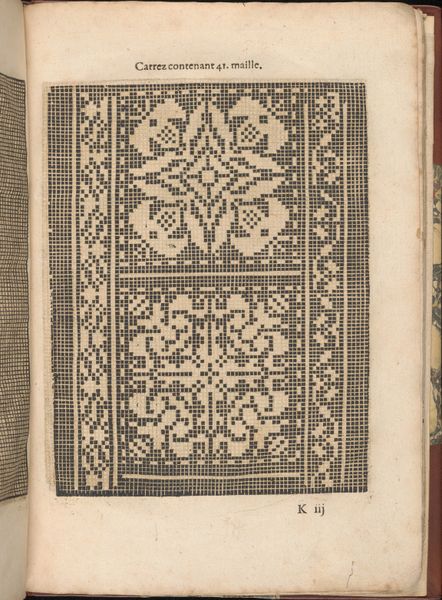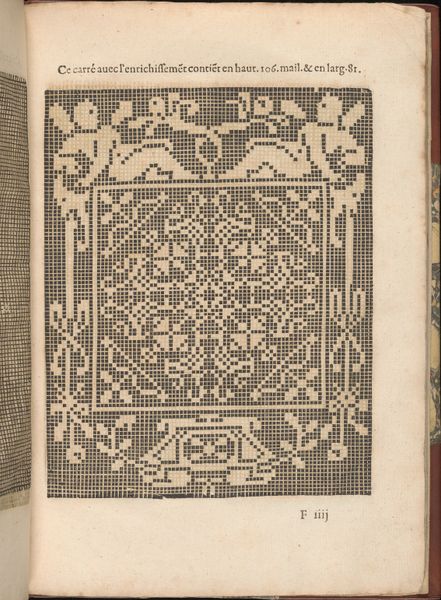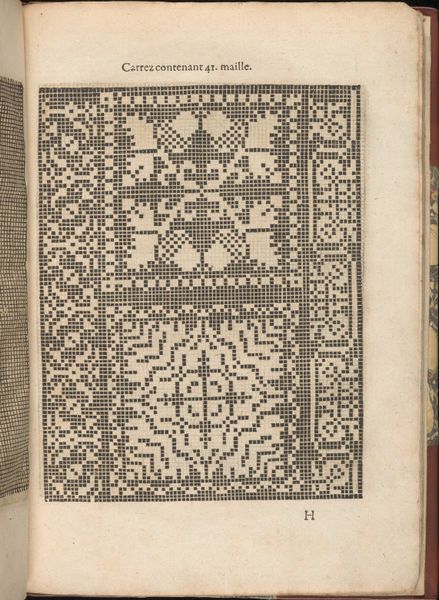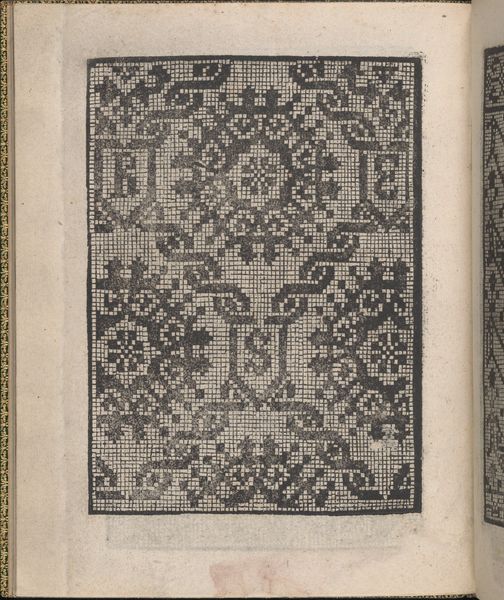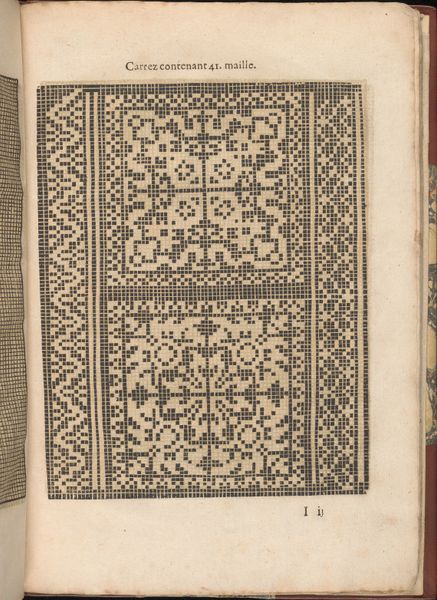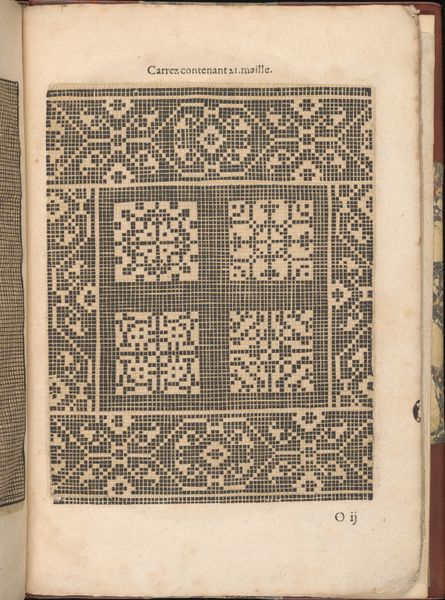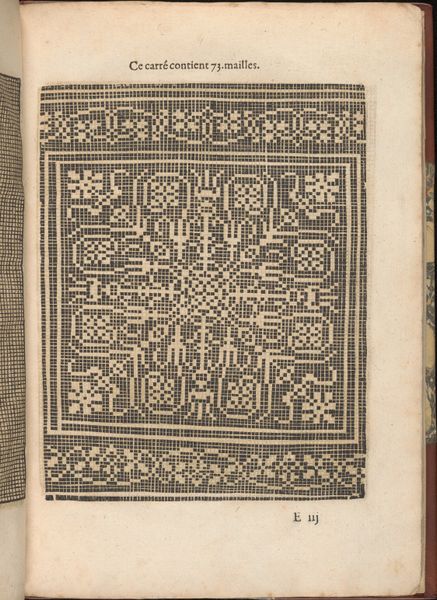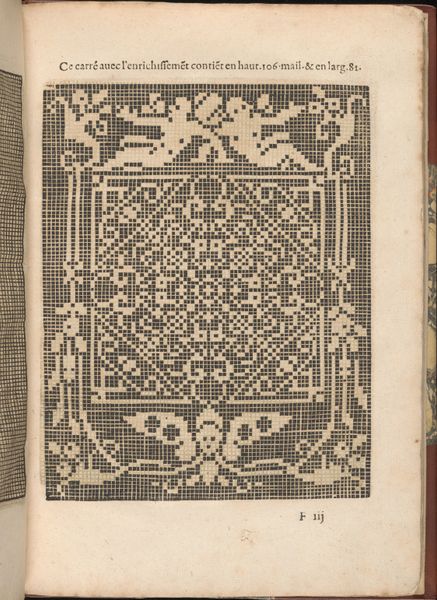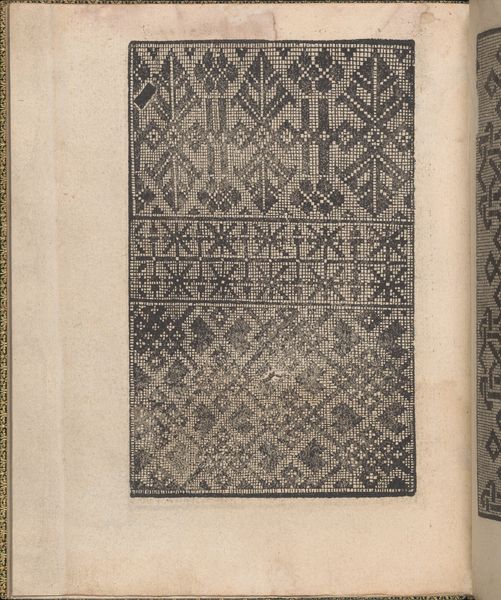
Les Secondes Oeuvres, et Subtiles Inventions De Lingerie du Seigneur Federic de Vinciolo Venitien, page 17 (recto) 1603
0:00
0:00
drawing, graphic-art, print, typography
#
drawing
#
graphic-art
# print
#
typography
Dimensions: Overall: 9 7/16 x 6 1/2 in. (24 x 16.5 cm)
Copyright: Public Domain
Curator: Wow, there's a comforting familiarity here. It almost feels like staring into a meticulously crafted textile, something passed down through generations. Editor: Indeed. This is page 17 from "Les Secondes Oeuvres, et Subtiles Inventions De Lingerie" by Federico de Vinciolo, from 1603. Specifically, this is an intaglio print, a type of drawing that would have likely functioned as a pattern for lace making. The work resides here at the Metropolitan Museum of Art. Curator: So, essentially a sixteenth-century DIY pattern. That's utterly charming! I'm intrigued by the grid; it highlights the labor inherent in its creation. Each tiny square must represent a knot, a stitch, a decision. Editor: Exactly. And consider the materials that are absent here, yet fundamentally implied—the linen threads, the bobbins, and, of course, the skilled hands meticulously executing the pattern. This era was particularly sensitive to expanding design beyond conventional ideas of art making and its integration into functional objects and their construction. Curator: It transcends function, though, doesn't it? It evokes such a calm, domestic harmony. Imagine someone sitting, crafting this intricate design by hand, their focus narrowed to each precise movement. This piece preserves that feeling of stillness. I'm drawn into the meditative quality embedded in its making. It almost feels like an early, analog, low-res photograph or cross-stitch today! Editor: A fitting connection, truly. Thinking about it as a commodity too. Patterns were essentially "trade secrets" in the lace-making world, weren't they? So this print allowed wider access. Consider its societal impact and reach, a sort of Renaissance democratization of design if you will! Curator: Oh, I love that perspective! Suddenly, this pattern is less about individual craft and more about a community, sharing skills and artistic language. A collaborative Renaissance moodboard, essentially. Editor: Yes, and now you understand better the importance of works like this as key components of artistic production of the period. Curator: What an unexpected journey into threads, textiles, and hidden labor. Thank you for weaving all of those interesting thoughts together for us. Editor: Always a pleasure to bring context to craft, revealing beauty through a material lens.
Comments
No comments
Be the first to comment and join the conversation on the ultimate creative platform.

